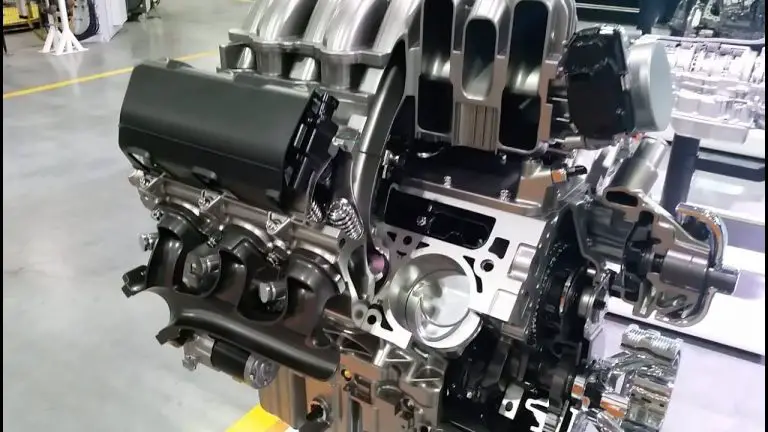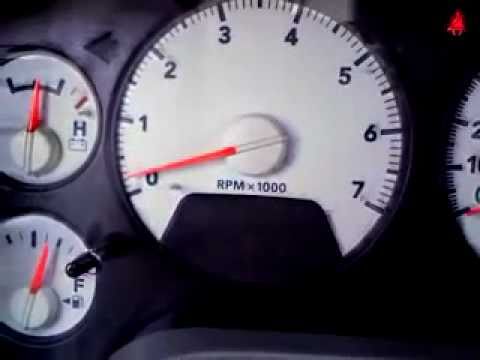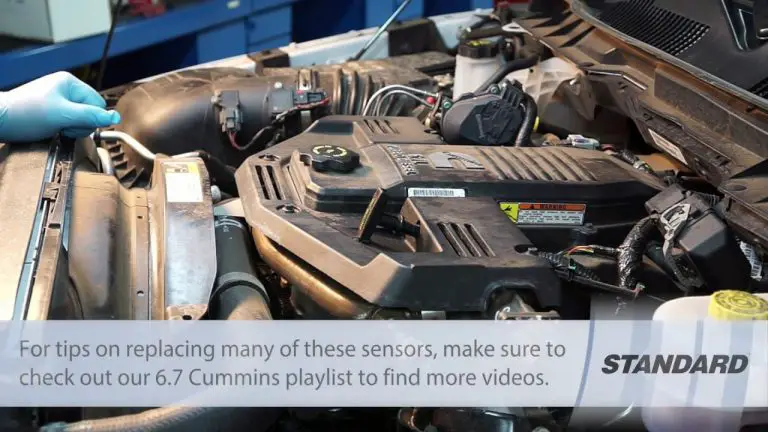7.3 Powerstroke Sensor Location Diagram
7.3 Powerstroke Sensor Location Diagram: The 7.3 Power Stroke engine has several engine sensors that play an important role in its performance. Some of the most common engine sensors in the 7.3 Power Stroke engine include the ICP sensor, CPS sensor, EOT sensor, and IPR sensor.
To locate these sensors, refer to the 7.3 Power Stroke sensor location diagram, which provides a detailed illustration of the engine sensors and their locations. By understanding the location and function of each engine sensor, you can diagnose and troubleshoot any issues that may arise.
Engine sensors are critical components of any vehicle’s engine system. They are responsible for collecting data and sending signals to the engine control module (ECM), which then adjusts various parameters such as fuel injection timing and air/fuel ratio to optimize engine performance.
Related Article: 6.7 Cummins Sensor Locations
The 7.3 Power Stroke engine is a popular diesel engine that has several engine sensors that play an essential role in its performance.
7.3 POWERSTROKE ENGINE OIL TEMP SENSOR
Location Diagram of Engine Sensors in the 7.3 Power Stroke Engine
The 7.3 Power Stroke engine is a diesel engine produced by Ford from 1994 to 2003. Engine sensors are crucial components of any vehicle’s engine system, and the 7.3 Power Stroke engine is no exception.
Understanding the location and function of each engine sensor in the 7.3 Power Stroke engine can help diagnose and troubleshoot engine issues.
The 7.3 Power Stroke engine has several engine sensors, each located in specific areas of the engine. The following are the engine sensors found in the 7.3 Power Stroke engine and their respective locations:
ICP Sensor
The Injection Control Pressure (ICP) sensor is located on the high-pressure oil pump cover. The ICP sensor measures the high-pressure oil in the engine’s oil system and sends the signal to the engine control module (ECM). The ECM uses this information to determine the correct fuel injection timing and fuel delivery to the engine.
CPS Sensor
The Camshaft Position Sensor (CPS) is located on the front cover of the engine, just above the crankshaft pulley. The CPS sensor measures the position and speed of the camshaft and sends the signal to the ECM. The ECM uses this information to determine the correct fuel injection timing and fuel delivery to the engine.
EOT Sensor
The Engine Oil Temperature (EOT) sensor is located on the driver’s side of the engine, just above the oil filter housing. The EOT sensor measures the engine oil temperature and sends the signal to the ECM. The ECM uses this information to adjust the engine’s operating parameters based on the oil temperature.
IPR Sensor
The Injector Pressure Regulator (IPR) sensor is located on the high-pressure oil pump cover. The IPR sensor measures the oil pressure in the engine’s high-pressure oil system and sends the signal to the ECM. The ECM uses this information to adjust the fuel injection pressure and timing.
MAP Sensor
The Manifold Absolute Pressure (MAP) sensor is located on the intake manifold. The MAP sensor measures the air pressure in the intake manifold and sends the signal to the ECM. The ECM uses this information to adjust the fuel injection timing and delivery based on the engine load.
EBP Sensor
The Exhaust Back Pressure (EBP) sensor is located on the passenger side of the engine, just below the turbocharger. The EBP sensor measures the exhaust back pressure and sends the signal to the ECM.
The ECM uses this information to adjust the turbocharger’s boost pressure and the engine’s operating parameters based on the exhaust back pressure.
Understanding the location of each engine sensor in the 7.3 Power Stroke engine is crucial for diagnosing and troubleshooting engine issues.
By using a diagnostic scan tool to check for trouble codes and measure the sensor’s voltage and resistance, you can identify and fix common engine sensor issues in the 7.3 Power Stroke engine.
See Also: ford twin i-beam pivot bushing replacement
Common Engine Sensors in the 7.3 Power Stroke Engine
The 7.3 Power Stroke engine has several engine sensors, each with its unique function. Some of the most common engine sensors in the 7.3 Power Stroke engine include:
ICP Sensor
The Injection Control Pressure (ICP) sensor is responsible for monitoring the high-pressure oil system’s pressure. The ICP sensor sends this information to the ECM, which then adjusts the fuel injection timing and pressure to optimize engine performance.
CPS Sensor
The Camshaft Position Sensor (CPS) is responsible for monitoring the camshaft’s position and speed. It sends this information to the ECM, which then adjusts the fuel injection timing to optimize engine performance.
EOT Sensor
The Engine Oil Temperature (EOT) sensor is responsible for monitoring the engine oil temperature. It sends this information to the ECM, which then adjusts the engine oil pressure and viscosity to optimize engine performance.
IPR Sensor
The Injection Pressure Regulator (IPR) sensor is responsible for monitoring the high-pressure oil system’s pressure. It sends this information to the ECM, which then adjusts the fuel injection pressure to optimize engine performance.
Troubleshooting Engine Sensor Issues in the 7.3 Power Stroke Engine
Engine sensor issues in the 7.3 Power Stroke engine can lead to poor engine performance and increased fuel consumption. Here are some common engine sensor issues in the 7.3 Power Stroke engine and tips for diagnosing and troubleshooting them.
ICP Sensor Issues
ICP sensor issues can cause rough idling, misfiring, and decreased engine performance. To diagnose and troubleshoot ICP sensor issues, use a diagnostic scan tool to check for trouble codes and measure the ICP sensor’s voltage.
CPS Sensor Issues
CPS sensor issues can cause hard starting, stalling, and decreased engine performance. To diagnose and troubleshoot CPS sensor issues, use a diagnostic scan tool to check for trouble codes and measure the CPS sensor’s resistance and voltage.
EOT Sensor Issues
EOT sensor issues can cause engine overheating and poor engine performance. To diagnose and troubleshoot EOT sensor issues, use a diagnostic scan tool to check for trouble codes and measure the EOT sensor’s voltage.
IPR Sensor Issues
IPR sensor issues can cause hard starting, stalling, and decreased engine performance. To diagnose and troubleshoot IPR sensor issues, use a diagnostic scan tool to check for trouble codes and measure the IPR sensor’s voltage.
7.3 Powerstroke Icp Sensor Failure Symptoms
If you’re driving a 7.3 Powerstroke diesel, then you know that your truck is equipped with an ICP (injection control pressure) sensor. This sensor is responsible for sending information to the PCM (powertrain control module) about the amount of pressure being exerted on the fuel injectors. If this sensor fails, it can cause a number of problems with your truck.
Here are some of the most common symptoms of ICP sensor failure: 1. Check Engine Light: One of the first things you’ll notice if your ICP sensor is failing is that the check engine light will come on. This light can be triggered by a number of different issues,
So it’s important to have your truck diagnosed by a professional to determine whether or not the ICP sensor is actually the problem.
2. Rough Idle: A failing ICP sensor can also cause your truck to idle rough. This means that when you come to a stop, your truck may shake or vibrate more than usual. 3. Stalling: If your ICP sensor is failing, it’s possible for your truck to stall unexpectedly.
This can be dangerous if it happens while you’re driving, so it’s important to be aware of this symptom and have your truck checked out as soon as possible if you notice it happening frequently. 4. Poor Fuel Economy: Another symptom of a failing ICP sensor is poor fuel economy.
If you find that you’re filling up your tank more often than usual, or if you’re noticing that your mileage has decreased significantly, then it’s worth having your truck checked out to see if the ICP sensor is at fault.

Credit: www.amazon.com
FAQs
What is the 7.3 Power Stroke engine?
The 7.3 Power Stroke engine is a diesel engine produced by Ford from 1994 to 2003.
What are engine sensors?
Engine sensors are devices that measure various engine parameters such as temperature, pressure, and speed.
What issues can faulty engine sensors cause?
Faulty engine sensors can cause a variety of issues such as poor engine performance, hard starting, and engine overheating.
How do I diagnose engine sensor issues?
To diagnose engine sensor issues, use a diagnostic scan tool to check for trouble codes and measure the sensor’s voltage and resistance.
7.3 POWERSTROKE Injection Control Pressure Sensor
Conclusion
Engine sensors are crucial components of any vehicle’s engine system, and the 7.3 Power Stroke engine is no exception. Understanding the location and function of each engine sensor in the 7.3 Power Stroke engine can help diagnose and troubleshoot engine issues.
By using a diagnostic scan tool and measuring the sensor’s voltage and resistance, you can identify and fix common engine sensor issues in the 7.3 Power Stroke engine.
See More:







